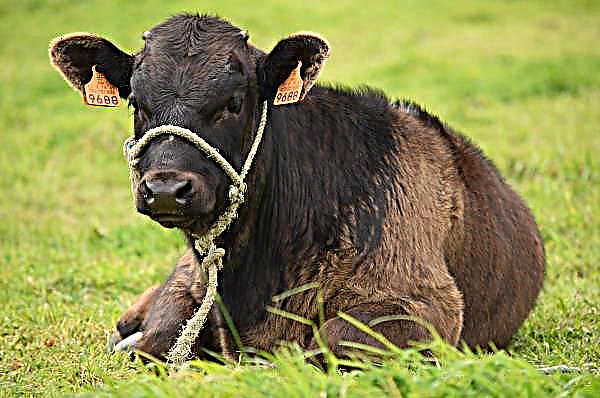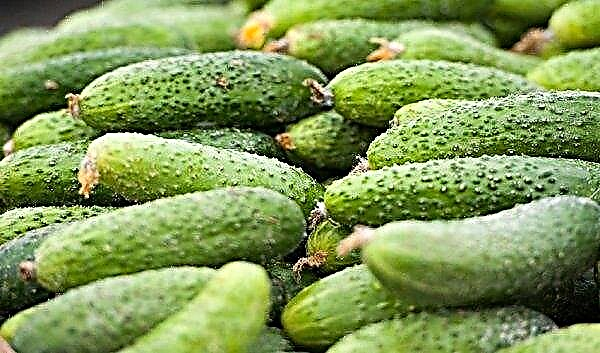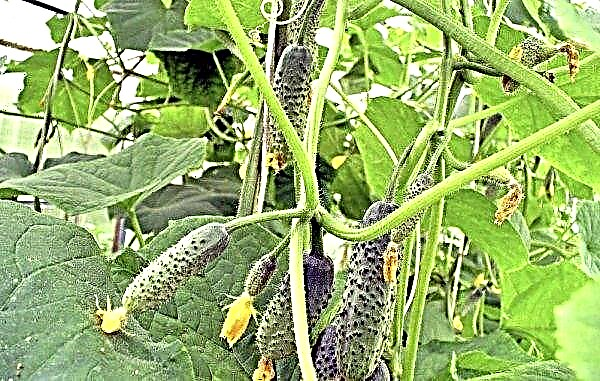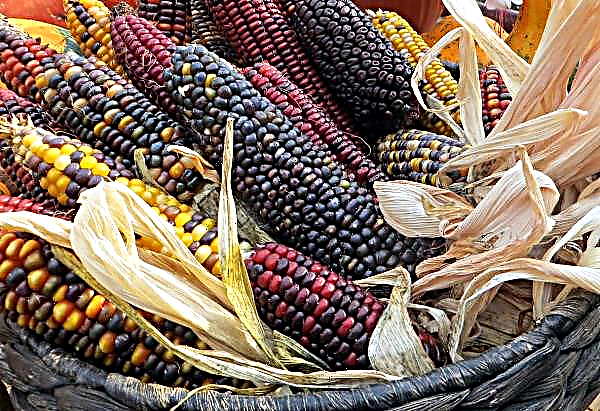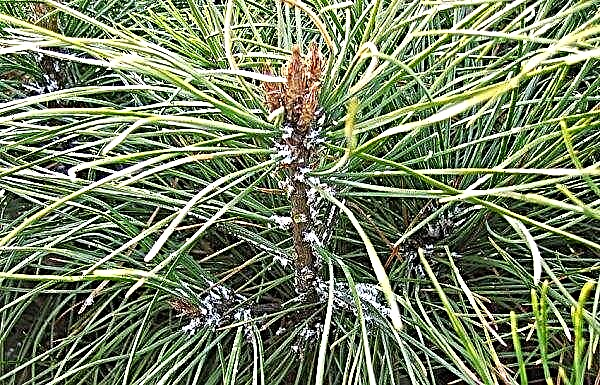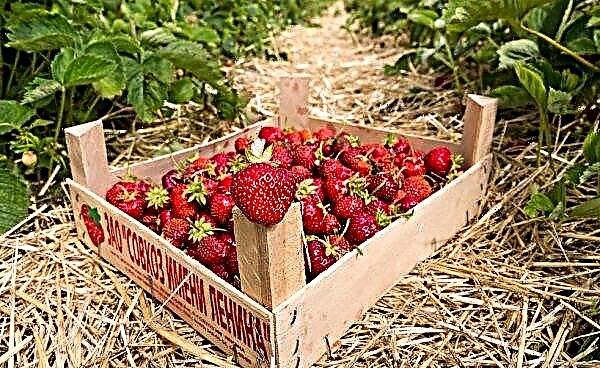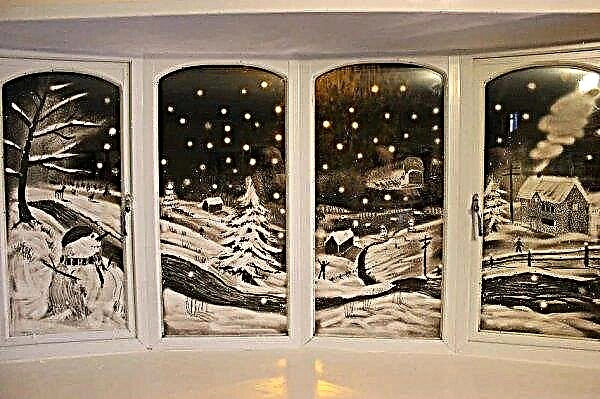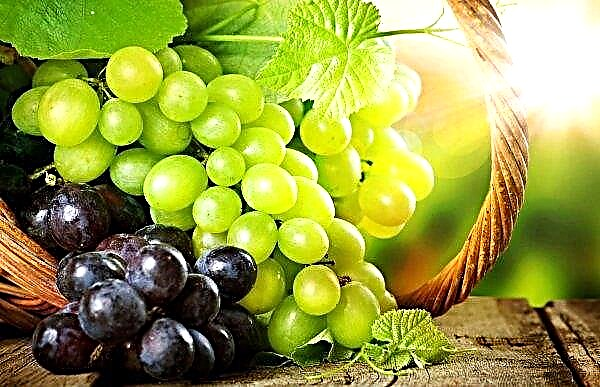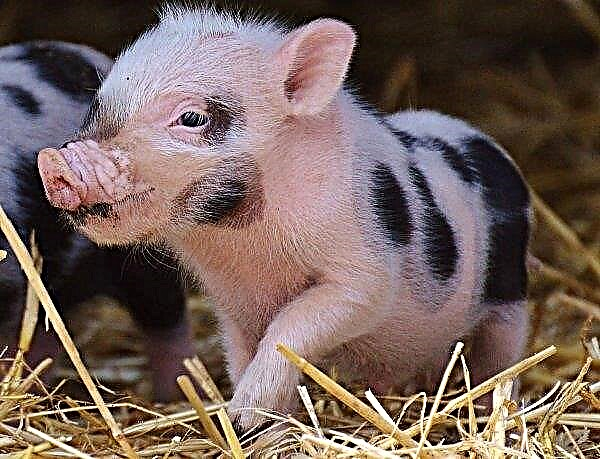The evergreen thuja has long been a decoration of home and public gardens and parks. It belongs to the winter-hardy and quickly adaptable to the conditions of the north species. But, when deciding on the purchase of one or another variety, it is certainly worth making sure that it can be planted in your climatic zone. Read more about which varieties will grow successfully in Siberia, read further in the material.
Does thuja grow in Siberia
Over the past century, scientists have developed different classification schemes for plants that can successfully grow in one or another climatic zone. The main factor to be evaluated was temperature. Now more often than others, a scheme is used that divides the world into 11 winter hardiness zones (USDA). The Siberian climate corresponds to the 3rd and 4th zones with minimum winter temperatures of -35 ° C and -40 ° C.
In the same period, a number of studies were conducted to study the conditions that allow the cultivation of different species of arborvitae and their varieties. Most of them can be planted and grown in zones from 3rd to 7th.

In addition to the climate as a whole, stamina is also taken into account. With the advent of autumn, nights become colder, and this is a signal for trees to transition to a state of rest. Evergreens just stop growing and their buds are inactive. This transition lasts several weeks, so if the weather is warm, and then suddenly an arctic cold wind appears, then the kidneys, which have not yet entered a state of rest, may die. And this factor equally affects all plants, regardless of how frost-resistant they are, so gardeners recommend sheltering any varieties of thuja for the winter in Siberia.
Did you know? In the winter, in the wild, thuja is a habitat for robins, finches. The seeds of the tree are eaten by birds and small rodents, and the needles serve as their shelter.
The best frost-resistant thuja
Thuja is a genus of conifers from the Cypress family. It includes 5 species.
Two of them come from North America and three from East Asia:
- Western thuja (T. occidentalis) distributed in eastern North America. All varieties created on its basis can be grown in the 2nd – 7th USDA zones.
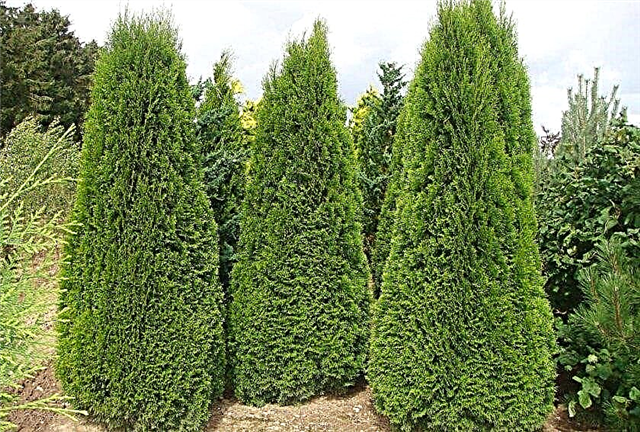
- Giant or folded (T. plicata) grows in northwestern North America. It tolerates a temperate climate.
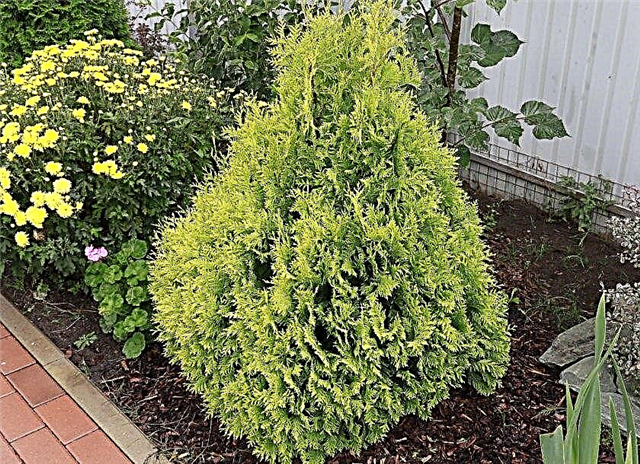
- Korean (T. koraiensis) in Russia can grow in the suburbs, St. Petersburg, Primorye and even Sakhalin.
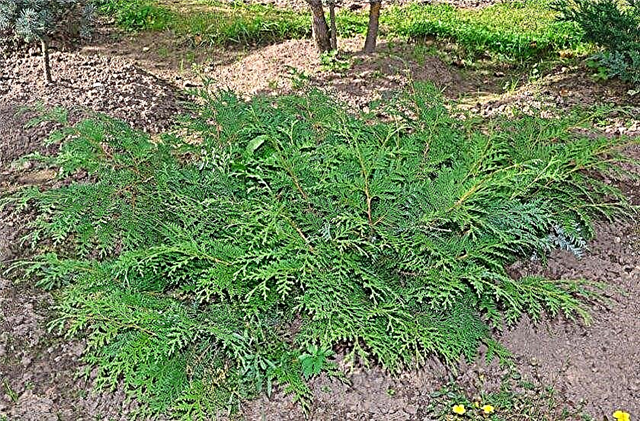
- Sichuan (T. sutchuenensis) prefers a moderately warm climate, therefore it is not recommended for planting in 3-4 zones.
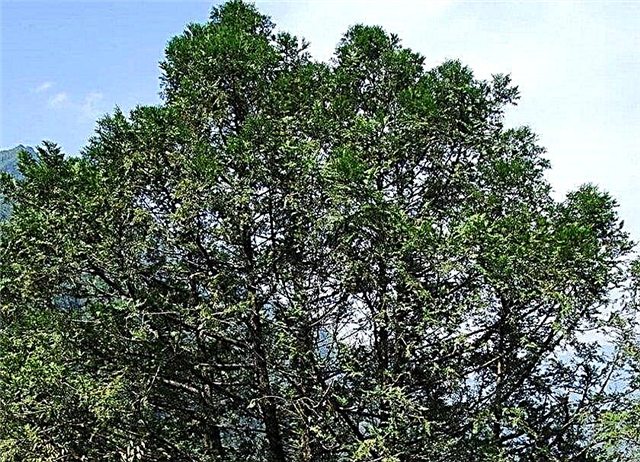
- Thuja Japanese or Standisha (T. Standishii) - a plant of the subalpine zone (minimum winter temperature - -23 ° С). This variety is also not worth growing in the northern regions.

In each species, there are a number of cultivars. By external signs, plants within the same species will be similar. Varietal differences are manifested in the form, density, shade of needles, therefore, choosing a tree for planting, focus primarily on its belonging to the genus as an indicator of winter hardiness.
Kolumna
Columna is an extremely hardy columnar variety of western arborvitae. The tree has a regular cylindrical shape and a blunt top. Plant height - up to 5 m, width - up to 1 m. Can be used to decorate building facades. Often landed on the street at the entrance to administrative buildings, children's and health facilities. With the help of Kolumna, you can imitate the Mediterranean style, as the tree in shape resembles cypress. This is one of the easiest varieties to care for.
Did you know? Thuja was used by the Native American Indian tribes of North America to build canoes, as well as for medicinal purposes. She became the first tree that was brought from America to Europe.
Columna variety description:
- type: evergreen tree;
- crown: cylindrical, conical;
- annual growth: 15 cm;
- growth rate: slow;
- maximum height: 5 m;
- needles: from above light green, from below gray, up to 12 cm long, classical;
- recommended winter hardiness zone: 5th with a minimum temperature of -26 ° C;
- soil requirements: none;
- Lighting: sun or partial shade;
- irrigation: moderate, without overdrying the soil.

Emerald
Thuja western Smaragd is a narrow-pyramidal evergreen tree with a height of 4 to 6 m. Its width in the lower part is up to 1.5 m. The bark at Smaragd is reddish-brown. At an adult tree, it is slightly peeling, peeling off by strips. Branches at the beginning of development are green, with age they acquire an orange-brown hue. The needles are scaly, bright green. It keeps its color unchanged both in winter and in summer. Cones of one shade with needles. They are very small, so they are invisible against the background of a tree. Smaragd is used to create hedges.. Caring for him is very simple. The variety is very hardy and can grow on any soil.
Features of the Smaragd variety:
- synonymous name: Thuja occidentalis Emeraude;
- selection: D.T. Poulsen, Quistgard, Denmark, 1950;
- type: evergreen tree;
- growth rate: fast;
- crown: narrow pyramidal, dense;
- soil type: any;
- soil moisture: suitable for dry soil, but also tolerates short floods;
- winter hardiness zone: 3rd (from -40 ° C to -34.5 ° C);
- wind resistance: highly stable;
- Lighting: can grow in the sun and in the shade;
- application: for hedges in parks, gardens, industrial zones.

Brabant
Brabant (Brabant) - another variety of western arborvitae. It is classified as a medium-sized tree up to 15 m high. The width at the bottom of the crown is 2.5 m.
The variety is a hybrid of thuja western and folded. And that made him so tall. Received in the early 1980s by H.J. van de Laarom in the Stinsel nursery, province of North Brabant (Netherlands).
Did you know? The first to research and describe the thirsty Swedish botanist Karl Linney. He added the epithet “western” to the name of the tree because the America from which it was brought was located west of Sweden.
Its distinctive features: red-brown bark, attractive green needles. Brabant is considered one of the most popular conifers in the European trade in plant nurseries. At the age of 10, a mature sample will reach a height of 5 m, a width of 1.8 m. The annual growth rate is 30–35 cm.
Requirements for the cultivation of Brabant:
- soil type: any;
- humidity: moderate;
- irrigation: regular;
- winter hardiness zone: 3rd (from -40 ° C to -34.5 ° C)
- wind resistance: highly stable;
- Lighting: can grow in the sun and in the shade;
- application: for hedges in parks, gardens, industrial zones.

Holmstrup
West Thuja Holmstrup - very popular and is used to create dwarf fences for gazebos and garden recreation areas. This is a columnar tree with compact branches and attractive dark green needles. She keeps her hue unchanged in any season. After 10 years of development, the thuja will reach a height of 3 m and a width of 80 cm. The tree grows quite quickly. Its annual growth is 20-30 cm.
In fact, Holmstrup is a dwarf species of Smaragd. It was first obtained in 1940 by breeder Asger M. Jensen from Holmstrup, Denmark. The peak of popularity of this variety occurred in the 1960s.
Growing Features:
- winter hardiness zone: 1–7;
- Lighting: full sun;
- watering: regular;
- soil type: any, but preferably sandy, drained;
- acidity: any;
- use: to create hedges.

Sunkist
Thuja western Sunkist (Sunkist) is represented by a tree of ovoid or conical shape. This is one of the best varieties in the color class.. The tree owes its exceptionally decorative qualities to the yellowish color of young needles, and therefore it is often acquired to replace the large golden cypress (Chamaecyparis) for planting in the northern regions. It adapts well to cutting and shaping.
Important! Thuja is toxic to pets. The thujone poison contained in it can cause the death of your pet.
Tree Features:
- shape: pyramidal;
- growth rate: average, up to 20 cm per year;
- needles color: light green in summer and bronze in winter; young needles are golden yellow;
- winter hardiness zone: 2–7th;
- Lighting: full sun;
- soil: any;
- humidity: moderate.

Landing rules
Thuja is the most popular evergreen plant used for landscaping house adjoining territories and decorating park avenues. Western thuja is acquired and planted for the purpose of hedging - the creation of hedges. Depending on the selected variety, the hedge created will be green or golden.
When planning planting work, beginner gardeners may make mistakes:
- The most common is landing too close. It is always tempting to create a solid fence at once. But you need to consider the size of an adult tree. And if it is equal to 2 m, then the distance between the trees should not be less than 1.2 m.
- The second mistake is the height of the fence. The central trunk must be shortened so that the tree does not break under a gust of wind or a large mass of snow in winter.
- The third is the length of the hedge.. Imagine you need a strip of trees 100 m long. With a distance of 1.5 m between them, you will need 55 to 66 trees. Before starting to prepare the landing pits, place two seedlings at the end points of the alley. Now evenly distribute the rest and mark these places with pegs and a building cord. Adjust the position so that the plants are evenly set before planting.
Video: How to plant a coniferous plant
Choose a sunny area. Thue needs bright lighting at least 6 hours a day. If this is the south side of the site, then you need to take care of the presence of a screen with which you can cover the seedlings from the bright sun in July - August. Make sure that the tree will not be disturbed by power lines or underground utilities after it reaches its maximum size.
Planting the evergreens is best planned for the fall: September or October. Start by preparing the site. It needs to remove weeds and dig the soil. The soil must pass water well and be nutritious, so the next step will be to refine it. Dilute with sand if it is too dense and, conversely, add alumina to the sandy soil. Typically, clay soil is not very nutritious, as is purely sandy, so in this place you need to stock up on compost and mix it with soil removed from the planting pits. Thuja grows well on all types of soil, so it does not need to regulate the level of acidity.
Important! Sawdust, wood chips or needles as mulch are convenient because under the influence of moisture they will release the nutrients contained in them to the soil, thereby regularly feeding the tree. But do not use weeds as this, some of them can sprout.
Planting a tree in open ground consists of the following steps:
- Remove the thuja from the container in which it arrived from the nursery. To do this, gently turn the pot over and tap on the bottom, supporting the tree. If it is too tight, loosen the roots with the back of the knife along the container wall.
- Dig a hole 2 times the root ball. Lay down the drain. It may be pebbles. The layer thickness is 15 cm. If the soil is well drained, then this is not necessary. Then the depth of the pit can be equal to the depth of the root layer.
- Mix compost with soil. Fill the part to the bottom of the pit and install a thaw on top.
- Now add soil to cover the root layer. Make sure that the root neck is at the same distance as in the nursery.
- Pour seedlings abundantly with water.
- From the remains of the soil, you can make a small mound around to make it convenient to water the tree.
- To prevent weed growth, soil compaction, and moisture evaporation, cover the near-trunk area with a layer of mulch. Thickness - 5-7 cm. It can be sawdust, wood chips, chopped straw, needles.

Care Features
Tree care will consist of:
- regular watering;
- periodic cropping;
- fertilizer application;
- prevention of diseases and pests;
- preparing thuja for wintering.
Watering and fertilizer
Freshly planted trees or those that are less than 2 years old need 100 liters of water per week. And if the weather is very hot, then they need more moisture, so they are watered no less than every other day. For a more accurate assessment, check the soil around the roots with your finger. If you do not feel moisture at a depth of 5 cm, then it's time to water. If the soil is wet, refrain from irrigation and check again after a day or two.
Important! Thuja cannot be fertilized with rotted manure. He can burn the roots.
As for fertilizers, after applying them during planting, you can not worry for 1-2 years. Enough 3-4 kg of compost introduced into each landing pit. If a developing tree complies with the growth standards, that is, its height and length of branches increase by the size indicated by the manufacturer for the year, then there is no need to fertilize.
For slow growth, use granular, slow release fertilizer. The concentration in the solution of nitrogen, phosphorus and potassium should correspond to the following proportions: 12: 6: 4 or 10: 8: 6. Be sure to water the plant after fertilizing. They bring it in early spring at the beginning of the growing season. Of the store preparations, “Agricole”, “Novofert” and other fertilizers are used.

Lack of fertilizer is not necessarily to blame for the underdevelopment of the tree.
You also need to pay attention to stressful factors:
- excess moisture in the soil prevents the absorption of nutrients by the roots, so be sure to organize a drainage system;
- insufficient watering leads to darkening of the tips of the needles and its subsequent decline.
The soil should always be cool and sufficiently moist. Be sure to control this.
Cultivation of the earth
Loosen the soil to a depth of 4 cm. Do this on the second day after watering. The purpose of loosening is to provide oxygen access for soil bacteria. Most useful microflora use oxygen for processing organics. At the same time, weeds are destroyed. But in cases where the basal zone is covered with mulch, loosening is not necessary. Mulch protects the soil from compaction, provides it with oxygen, and prevents the growth of weeds.

Pruning
From thuja you can create the perfect hedge. It grows quickly, but it also needs to be cut correctly.
Fundamental rules:
- Start pruning shortly after planting. The most common mistake is a gardener waiting for the tree to reach the desired height. Draw a visual line or pull the cord. Every year, shoots grow by 10–20 or more centimeters, depending on the variety. You need to cut 3-5 cm. And so every year. In this case, by the time the trees close in the fence, they will all be in the correct shape.
- Cut your hedge from the second half of summer to fall. More precisely, after the growth of this year reached its maximum size.
- Avoid pruning in the summer heat, and you should not do a shaping haircut in the winter.
- Trim too long shoots. In winter, they can break under the weight of snow, and the wound received by the tree will heal for a long time.
Did you know? Thuja wood cabinets repel moles. It is also valued in the shoe industry for its ability to absorb moisture and neutralize odors.
In addition to molding perform sanitary pruning. This is the removal of dried or diseased branches. Usually they attribute it to February. But you can cut a dry branch at any time of the year. You just need to make sure that it is really dry, scraping the bark. Under it should be dry wood. A disinfected tool is used for trimming, and the place of cut is treated with garden var.

Shelter for the winter
Tui are frost-resistant, so they do not have many winter problems. But some need to pay attention:
- If heavy snowfall has occurred, branches may break under the weight of snow. So, you need to take a garden broom and shake it off. But the snow itself is a good insulator from frost, so small seedlings can be cleaned under a wooden cone-shaped frame covered with agrofibre or spruce branches. The snow that has fallen will not put pressure on the branches, but it will protect the young thuja from frost.
- Evergreens do not hibernate, and in winter they also continue to develop.. But frozen ground does not allow them to get enough moisture. That is why the thuja turns brown - its needles dries from a lack of water. At this time, it is recommended to spray the trees with the Ecogel biostimulator. It moisturizes the needles and will prevent the evaporation of moisture from it.
- Trunks of young trees can also be damaged by the sun, which heats them on a sunny day.. And then, when the temperature drops sharply at night, the tree may crack from the temperature difference, so the newly planted plants are protected with a wrapper made of corrugated cardboard or stained with whitewash.

Different varieties of arborvitae are suitable for cultivation in Siberia - both tall and dwarf. Each gardener can choose among them those that are more suitable for him. Unpretentious, frost-resistant thuja do not require particularly careful care, do not get sick and have high decorative properties.






